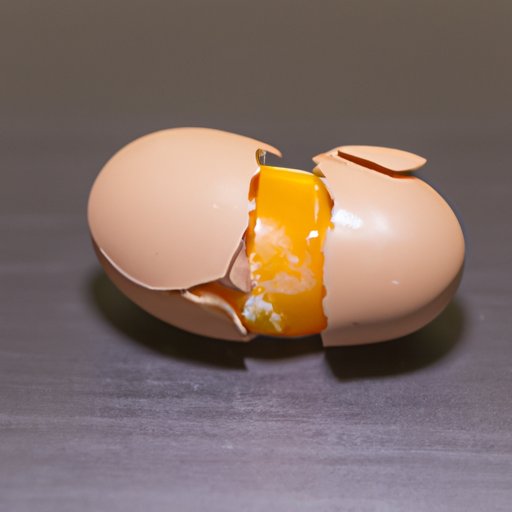Introduction
Have you ever opened an egg carton and wondered if the eggs inside are still good to eat? Checking the freshness of eggs before use is essential, as expired eggs can cause health problems. Fortunately, there are several simple tests that you can perform to determine whether an egg is still good. This article covers the most popular techniques for checking the freshness of eggs, including color and texture, the float test, the smell test, cracking, the Julian date system, and candling.
Color and Texture
Before discussing the specific tests, let’s define what we mean by a fresh, good egg. A fresh egg is one that has been recently laid and is still safe to eat. Characteristics of a fresh egg include a bright yellow yolk and thick, clear albumen. To check these characteristics, you can observe the color and texture of the egg.
To observe the color and texture of the egg, simply hold it up to the light. A fresh egg will have a bright yellow yolk and a thick, clear albumen. If the egg has a dull yellow yolk, and the albumen is thin and watery, it is not fresh and should not be used.
Float Test
The float test is the most popular method for checking the freshness of eggs. It involves immersing the egg in a bowl of water to determine its buoyancy. Here’s how to perform the float test:
- Fill a bowl or glass with cold water.
- Gently place the egg in the water.
- If the egg sinks and lays flat on the bottom, it is fresh.
- If the egg stands on end or floats, it is not fresh and should not be used.
Smell Test
The smell test is another method for checking the freshness of eggs. It involves simply sniffing the egg to detect any foul odors. Here’s how to perform the smell test:
- Take the egg out of the carton.
- Smell the egg. If it has no odor, it is fresh.
- If the egg has a strong, unpleasant scent, it is not fresh, and you should discard it.
Cracking and Appearance
To check the freshness of eggs, you can also crack it open and observe the appearance of the yolk and white. A fresh egg will have a distinct separation between the yolk and white, and the white will be firm. If the egg is not fresh, the yolk will be flat, and the white will be runny. Here’s how to perform the cracking test:
- Hold the egg over a bowl.
- Crack the egg open and observe the yolk and white.
- If the yolk is round and stands high, and the white is firm, the egg is fresh.
- If the yolk is flat, and the white is runny, the egg is not fresh and should not be used.
Julian Date
The Julian date system is a method of egg dating that assigns a number to eggs based on the day they were packed. This number can help you determine the freshness of an egg. Here’s how to interpret the Julian date:
- The first three numbers represent the day of the year (001 for January 1st, 365 for December 31st).
- The next two numbers indicate the plant location code.
- The last number is the packing date code, ranging from 1 to 365.
To determine the freshness of an egg using the Julian date:
- Check the code printed on the eggshell next to the “sell-by” date.
- If the code is closer to 001 (January 1st), the egg is fresh.
- If the code is closer to 365 (December 31st), the egg is not fresh and should not be used.
Candling
Candling is a process that involves shining a light through an egg to check its contents. This method is often used to determine whether an egg contains a developing embryo. However, it can also help determine the freshness of an egg. Here’s how to candle an egg:
- Hold the egg up to a bright light source, such as a flashlight.
- Observe the contents of the egg.
- A fresh egg will have a small air pocket and a well-defined yolk and white.
- An egg that is not fresh will have a larger air pocket, and the yolk and white will be more spread out.
Conclusion
In conclusion, knowing how to tell if an egg is still good is important for ensuring food safety and avoiding the risk of using expired eggs. The methods covered in this article include color and texture observation, the float test, the smell test, cracking, the Julian date system, and candling. By using these simple tests, you can easily tell whether an egg is fresh and safe to use in cooking. Remember, always take precautions when using eggs, and discard any eggs that have gone bad.
